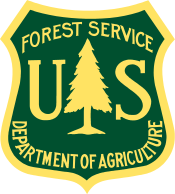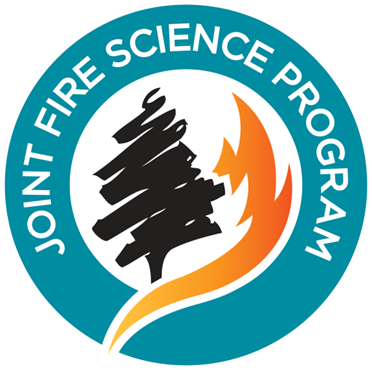Publications Library
. Landscape‑scale fuel treatment effectiveness: lessons learned from wildland fire case studies in forests of the western United States and Great Lakes region. Fire Ecology. 2023;19(1). Urza et al_2023_FireEcol_Landscape‑scale fuel treatment effectiveness- lessons learned from wildland fire case studies in forests of the western United States and Great Lakes region.pdf (1.27 MB)
Urza et al_2023_FireEcol_Landscape‑scale fuel treatment effectiveness- lessons learned from wildland fire case studies in forests of the western United States and Great Lakes region.pdf (1.27 MB)
. A Classification of US Wildland Firefighter Entrapments Based on Coincident Fuels, Weather, and Topography Fire. 2019;2(4).
. Evaluating Model Predictions of Fire Induced Tree Mortality Using Wildfire-Affected Forest Inventory Measurements Forests. 2019;10(11).
. Fire behaviour and smoke modelling: model improvement and measurement needs for next-generation smoke research and forecasting systems International Journal of Wildland Fire. 2019;28(8).
. NWFSC Fire Facts: What are? Parts of a Wildfire.; 2019. Parts of a Fire.pdf (583.09 KB)
Parts of a Fire.pdf (583.09 KB)
. NWFSC Fire Facts: What are? Types of Fire.; 2019. Types of Fire.pdf (817.81 KB)
Types of Fire.pdf (817.81 KB)
. Advancing the Science of Wildland Fire Dynamics Using Process-Based Models Fire. 2018;1(2).
. Long-Term Effects of Fire on Vegetation Structure and Predicted Fire Behavior in Wyoming Big Sagebrush Ecosystems Ecosystems. 2018;(Online ISSN 1435-0629).
. Fire Science Core Curriculum. (). Corvallis, OR: OSU Extension Service; 2017:197 p. Available at: https://catalog.extension.oregonstate.edu/em9172.
. NWFSC Fire Facts: What is? Fire Behavior.; 2017. FIREFACTS_Fire Behavior.pdf (713.8 KB)
FIREFACTS_Fire Behavior.pdf (713.8 KB)
. Spatially explicit measurements of forest structure and fire behavior following restoration treatments in dry forests Forest Ecology and Management. 2017;386.
. Sustainability and wildland fire: The origins of Forest Service Wildland Fire Research. Washington, D.C.: U.S. Department of Agriculture, Forest Service; 2017:120.
. Predicting large wildfires across western North America by modeling seasonal variation in soil water balance Climate Change. 2016;135(2).
. Synthesis of Knowledge of Extreme Fire Behavior: Volume II for Fire Behavior Specialists, Researchers, and Meteorologists. (). Portland, OR: US Department of Agriculture, Forest Service, Pacific Northwest Research Station; 2016:258 p. Available at: http://www.fs.fed.us/pnw/pubs/pnw_gtr891.pdf.
. Evaluating crown fire rate of spread predictions from physics-based models Fire Technology. 2015. Available at: http://www.treesearch.fs.fed.us/pubs/48875.
. Experimental analysis of fire spread across a two-dimensional ridge under wind conditions International Journal of Wildland Fire. 2015;Online early.
. A Wildfire-relevant climatology of the convective environment of the United States International Journal of Wildland Fire. 2015;24.
Mapping the daily progression of large wildland fires using MODIS active fire data. International Journal of Wildland Fire. 2014;On-line early.
. Simulated western spruce budworm defoliation reduces torching and crowning potential: a sensitivity analysis using a physics-based fire model. International Journal of Wildland Fire. 2014;On-line early. Available at: http://dx.doi.org/10.1071/WF13074.
. Synthesis on crown fire behavior in conifer forests. 2014. FMT73-4.pdf0_.pdf (3.59 MB)
FMT73-4.pdf0_.pdf (3.59 MB)
. Capturing Fire: RxCadre Takes Fire Measurements to a Whole New Level. Joint Fire Science Program; 2013. FSdigest16.pdf (890.34 KB)
FSdigest16.pdf (890.34 KB)
. Crown fire behavior characteristics and prediction in conifer forests: a state-of-knowledge synthesis.; 2013:39. Available at: https://www.firescience.gov/projects/09-S-03-1/project/09-S-03-1_final_report.pdf.
. Current status and future needs of the BehavePlus fire modeling system. International Journal of Wildland Fire. 2013;On-line early.
. Interactions among the mountain pine beetle, fires, and fuels. Forest Science. 2013;On-line early. rmrs_2014_jenkins_m001.pdf (530.8 KB)
rmrs_2014_jenkins_m001.pdf (530.8 KB)





